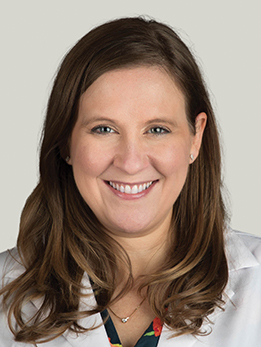The Threat of COVID-19 to Religious and Not-For-Profit Organizations: How to Stay Safe During Dangerous Times
The scourge of COVID-19 continues to take its toll worldwide. As of the writing of this article, there have been nearly 7.6 million COVID-19 cases in the United States, resulting in the deaths of almost 220,000 people.1 Cook County ranks third in the country (by county) for total number of cases,1 leading to the deaths of over 3000 people in the Chicagoland area alone.1
Gathering together for worship is at the heart of what it means to be a community of faith. Unfortunately, gatherings present an increased risk of spreading COVID-19. We are reminiscent of tragedies such as the deaths of 26 nuns this summer as COVID-19 rapidly spread through three U.S. convents.2, 3 Such challenges will intensify as the weather changes and the cherished holiday traditional gatherings are upon us. Religious and not-for-profit organizations need to take proper precautions to mitigate the spread of COVID-19 and prevent future tragedies.
What precautions should my organization take?
The backbone of any COVID-19 risk mitigation strategy starts with making it easy to do the right thing and difficult to break rules and protocols. This includes already well-established measures such as wearing masks, washing hands, and thoroughly cleaning any shared items between use. These measures are a baseline competency in pandemic safety and attention must be paid to ensuring that these expectations are not just written into documents but both practical and practiced by everyone in every setting.
Those leading an organization are encouraged to have a well-developed “stay at home” policy for employees who become ill that avoids penalizing sick employees for staying home. Most cases of COVID begin with fairly innocuous symptoms that progress slowly. Encouraging those with even mild symptoms to work from home for a day or two is far preferable to indulging the usual presenteeism habit of coming to work unless or until absolutely unable to fulfill one’s duties.
Everyone should expect to have one or two cases of COVID-19 in their staff but it is imperative to prevent “super spreader” events, characterized by the “3 C’s”: Crowded settings, Close contact with others, and Closed spaces with poor ventilation.4 Successful strategies for combating each risk factor are discussed below.
Crowded Spaces and Close Contact
Most preventive measures covering these issues are already well known to the public. At least 6 feet of space should exist between individuals so that aerosolized respiratory droplets are diluted, preventing the spread of viral particles. For indoor events, both mask wearing and 6 feet of distance between individuals are necessary. It is allowable and safe for people to pass each other or be in closer contact (with masks on) for brief periods of time but plexiglass shields can also be employed when distance cannot be maintained. However, it is important not to use plexiglass to justify fitting more people into a smaller space. For outdoor events, either masks or distance are sufficient on their own but using both can signal that safety is a high priority.
How do we provide ventilation during cold weather?
As we approach winter, people will begin spending more time indoors. Optimizing indoor ventilation becomes critically important. Churches or organizations that reside in small buildings will have to work extra hard to ensure fresh air circulates throughout their common areas. Organizations may need to keep windows open while heat is running to maximize ventilation with fresh air, especially with radiant heating systems or inability to increase filtration capacity. While such strategies will inevitably lead to higher heating costs and are certainly not desirable from an environmental standpoint, they may be necessary in some spaces. During the “Spanish Flu” epidemic of 1918-1919, the New York City Board of Health ordered windows to remain open during winter to provide ventilation.5 In response, engineers devised boilers and radiators designed to adequately heat buildings despite all the windows being open.5 Today, occupants of these older buildings often complain how such radiators lead to excessive heat in a world where we typically close windows during winter. Forced air HVAC systems may be able to upgrade their filtration and/or decrease the amount of recirculated air to reduce risk. Spaces where poor ventilation cannot be improved should not be used or, at least, should have serious restrictions on occupancy (requiring much more than the usual 6 feet of space, limiting the duration of meetings or use, and allowing for at least 1 hour between events). These often-overlooked interventions may make all the difference this winter.
What do we do during the holidays?
Holiday traditions will be extremely challenging for everyone this year, but especially so for religious organizations. Most churches in Illinois can provide services for a restricted number of people in person (typically up to 50 people), with the rest participating electronically on services such as Zoom. Some churches have developed a ticketing system so people can apply for in-person attendance, limiting tickets distributed to any specific person or family. Such tickets will likely become more valuable for major holidays such as Christmas.
One strategy is to increase the number of services available. For example, a church could have 8 Christmas masses rather than 4. It is also important to note that the maximum occupancy for a gathering may be the percentage occupancy rather than a particular number. For example, if a certain township says the maximum gathering size is 25 people or 25%, but your church only fits 25 people, that means only 6-7 people should be allowed to fill a 25-person church (not 25 people). Understanding the local epidemiology is also important. If there is an outbreak amongst members or increasing cases in your area, deciding to be all-remote could be as lifesaving as it would be disappointing. In short, finding ways for members to be more engaged and connected without being on site should be a key piece of planning for the fall and winter even if you are currently holding services or events in person.
What if one of my employees gets sick?
A symptomatic COVID-19 positive patient can return to work 10 days after the onset of symptoms (or first positive test) as long as they are feeling better and are no longer having a fever (without taking Advil, Tylenol or other fever reducing medication). Those who tested positive but never had any symptoms can simply return 10 days after the positive test. In some cases, such as those with complex medical histories or severe illness, individuals may need more time before they can return to work. When in doubt, request that the sick individual get medical advice about their specific situation. When someone who works (physically) closely with others in your organization gets COVID, it will be important to identify any close contacts and exclude them from work for a period of time in case they become ill. For more advice about workplace contact tracing, check CDC guidelines6 or contact your local public health department.
How to monitor if my employees get sick?
Temperature tracking on its own is not likely to pick up most COVID infections and can lead to a false sense of security. Instead organizations should ask employees to check themselves for the whole list of COVID symptoms each day before work. Some institutions use an honor system paired with adequate signage and notification of the policy. Others have symptom screeners stationed at entryways or ask people to attest to being symptom free using a checklist submitted on arrival. Others employ apps or mobile questionnaires to help employees or visitors monitor their symptoms. Even mild symptoms like congestion or feeling feverish should be taken seriously in the time of COVID.
What do I do if I suspect an outbreak in my parish or organization?
More than one case of COVID in individuals that had close contact within your space or at an event hosted by your organization should be considered a possible transmission event. Additional cases would be considered a cluster, or small outbreak. If you suspect any of these have happened within your purview, it is wise to contact your local health department as soon as possible. In Chicago, this is the Chicago Department of Public Health (312/747-9884 or after hours call 311 and ask for the communicable diseases physician on call). For the rest of Illinois, you should reach your county health department (listed here).7 They are eager to help you determine if a true outbreak is occurring and can provide much needed help and advice on next steps.
What about schools?
The priority for in-person education should be the youngest children. Older children have more contacts at school, are better able to benefit from remote learning, and are more likely to have significant COVID infections. Coronavirus information for schools can be found on the Illinois State Board of Education website.
When will life return to normal?
COVID-19 is a dangerous illness. The current focus on death rates as the most important factor minimizes the burden that severe illness poses on individuals, families, and their loved ones. It also fails to take into account our growing understanding of COVID’s legacy. Some patients have ongoing issues after infection that may prove to change their lives irrevocably. Even some with mild infection are showing signs of lingering heart and lung damage that may be invisible now but promise limitations in the future. And those with severe disease may not ever recover completely. The mission of religious or other socially responsible organizations is to serve their community. Taking the appropriate precautions against COVID-19 not only saves lives, but also helps your organization send a message of communal care and moral fortitude to those who look to your parish or organization for guidance during troublesome times.
Unfortunately, it is very difficult to predict when this unique era will finally be behind us. The short answer is unfair and unwelcome: not any time soon. Our prediction is that the spread of COVID-19 will likely be much worse in January 2021 that it is currently. But these days will not last forever. As faint as the light may seem to us right now, it is worth pursuing it with as much alacrity as we can muster.
Many believe that the introduction of the first COVID-19 vaccines will end the pandemic. While these very likely will become available this winter, there will not be enough for everyone in the beginning and they will not be completely effective. It is best to think of COVID vaccines as an increasingly effective layer that can be added to the existing stack of interventions including masking, distancing, ventilation, cleaning, testing, tracing, and staying home when sick. None of these interventions will be successful at ending the pandemic on its own, but together they can allow us to resume much of our normal activity when practiced with faithful commitment by as many people as possible. There are few things that so meaningfully illustrate the importance of our shared humanity and the need for community cooperation as a pandemic. We wish you all peace and good health as we navigate this time together.
Additional Resources
- City of Chicago – https://www.chicago.gov/city/en/sites/covid-19/home.html or dial 311 and ask for the communicable disease professional on call
- Illinois Department of Public Health – dph.illinois.gov/covid19 or
1-800-889-3931
- Cook County – https://cookcountypublichealth.org/contact-us/ or 708-633-8052
- Lake County – https://www.lakecountyil.gov/4377/Coronavirus-Disease-2019-COVID-19 or (847) 377-8186
- DuPage County – https://www.dupagehealth.org/610/DuPage-County-COVID-19-Dashboard
- McHenry County – https://www.mchenrycountyil.gov/county-government/departments-a-i/health-department/covid-19-novel-coronavirus or (815) 334-4000
- Illinois State Board of Education - https://www.isbe.net/Pages/covid19.aspx
References
- Johns Hopkins University COVID-19 Resource Center. October 8, 2020
- 13 Religious Sisters Have Died From COVID-19 at a Single Convent in Michigan. https://time.com/5869948/13-nuns-felician-sisters-die-coronavirus-michigan/
- 26 deaths in three US convents, as nuns confront the coronavirus pandemic. Accessed October 9, 2020, https://chicago.suntimes.com/coronavirus/2020/7/24/21337718/nuns-the-coronavirus-pandemic
- Japan ends its COVID-19 state of emergency. Accessed October 10, 2020, https://www.sciencemag.org/news/2020/05/japan-ends-its-covid-19-state-emergency
- Your Old Radiator Is a Pandemic-Fighting Weapon. October 10, 2020, https://www.bloomberg.com/news/articles/2020-08-05/the-curious-history-of-steam-heat-and-pandemics
- Case Investigation and Contact Tracing in Non-healthcare Workplaces: Information for Employers. Accessed October 14, 2020, https://www.cdc.gov/coronavirus/2019-ncov/community/contact-tracing-nonhealthcare-workplaces.html
- IDPH Resources. Accessed October 14, 2020, http://www.idph.state.il.us/IDPHPrograms/v_LHDDirectory/Show-V-LHDDirectory-Public.aspx
Contact info for Anthony Serritella, MD and Emily Landon, MD
About the Authors
Anthony Serritella, MD is an Instructor of Medicine in the Division of Hospital Medicine at Northwestern Memorial Hospital in Chicago. Emily Landon, MD is an Associate Professor of Medicine in the Department of Infectious Disease at the University of Chicago Hospitals where she also serves as the Executive Medical Director for Infection Prevention and Control and is a nationally acclaimed epidemiologist.


Related Professional
- In Memoriam
Related Practices & Industries
Sign-Up
Subscribe to receive firm announcements, news, alerts and event invitations.

